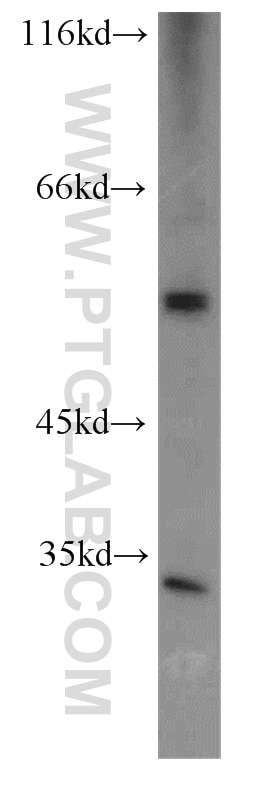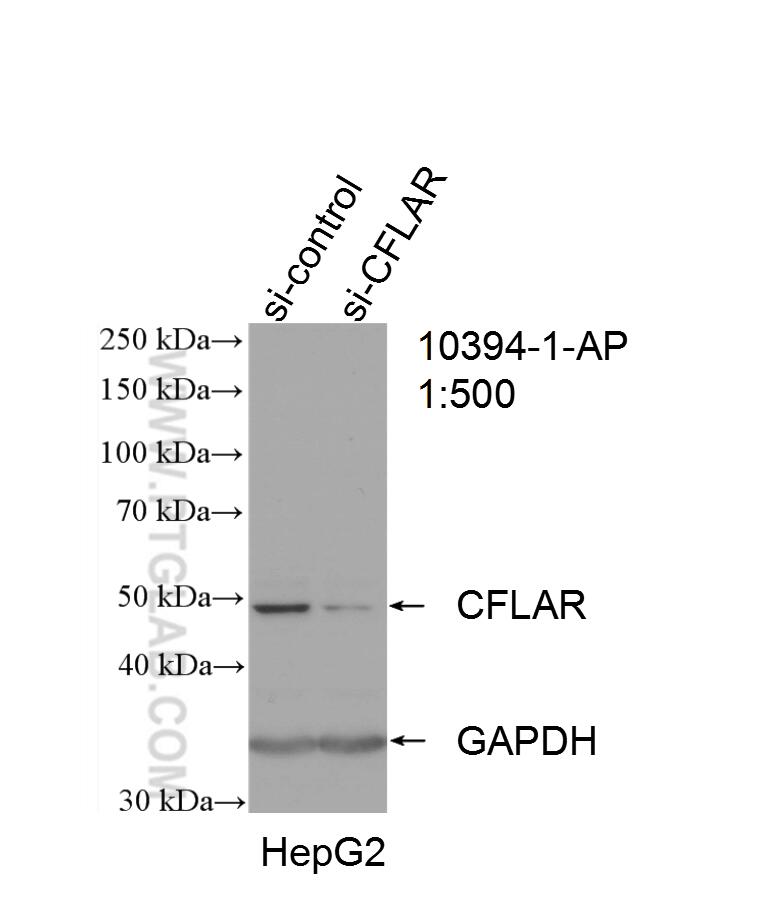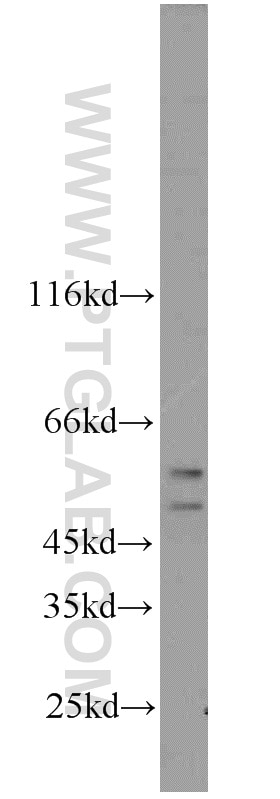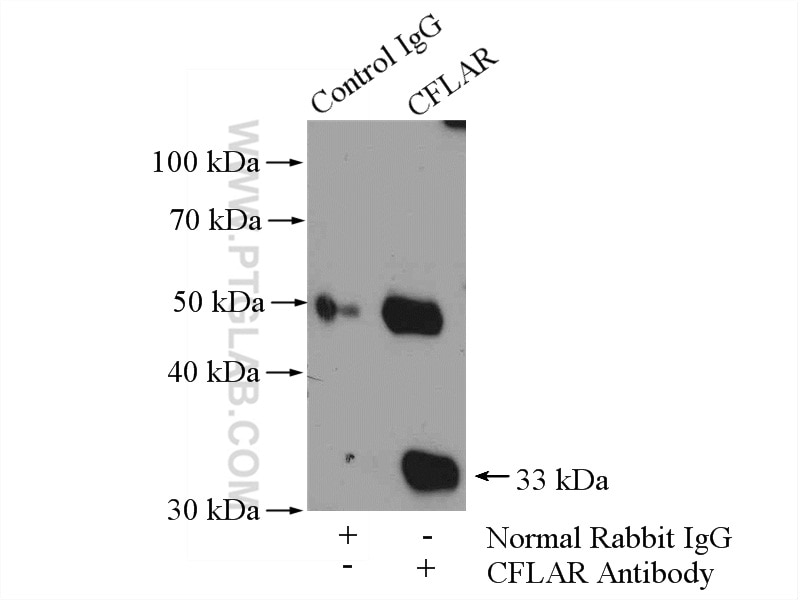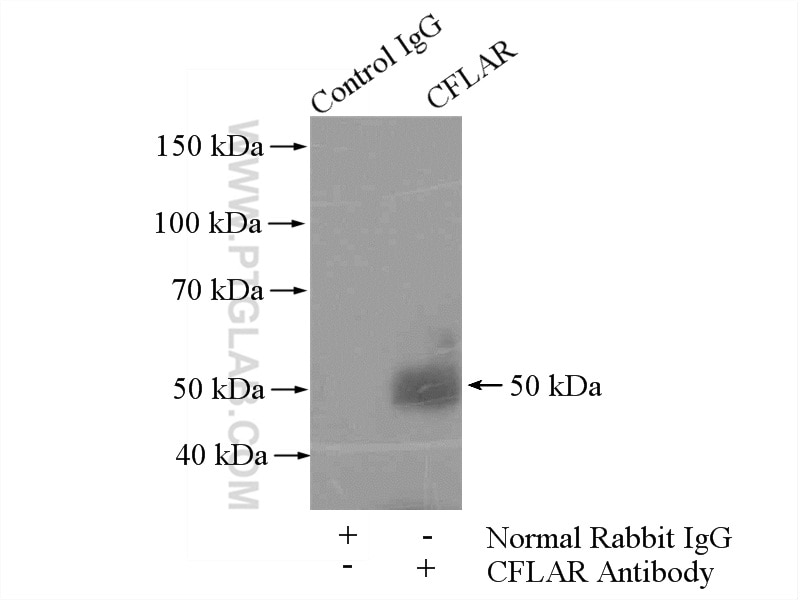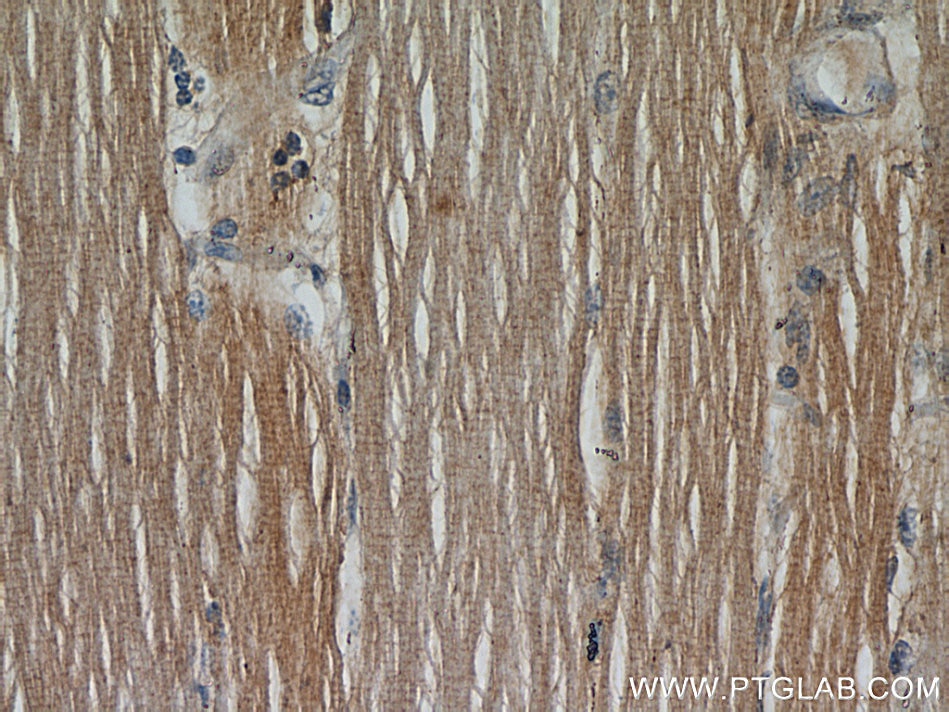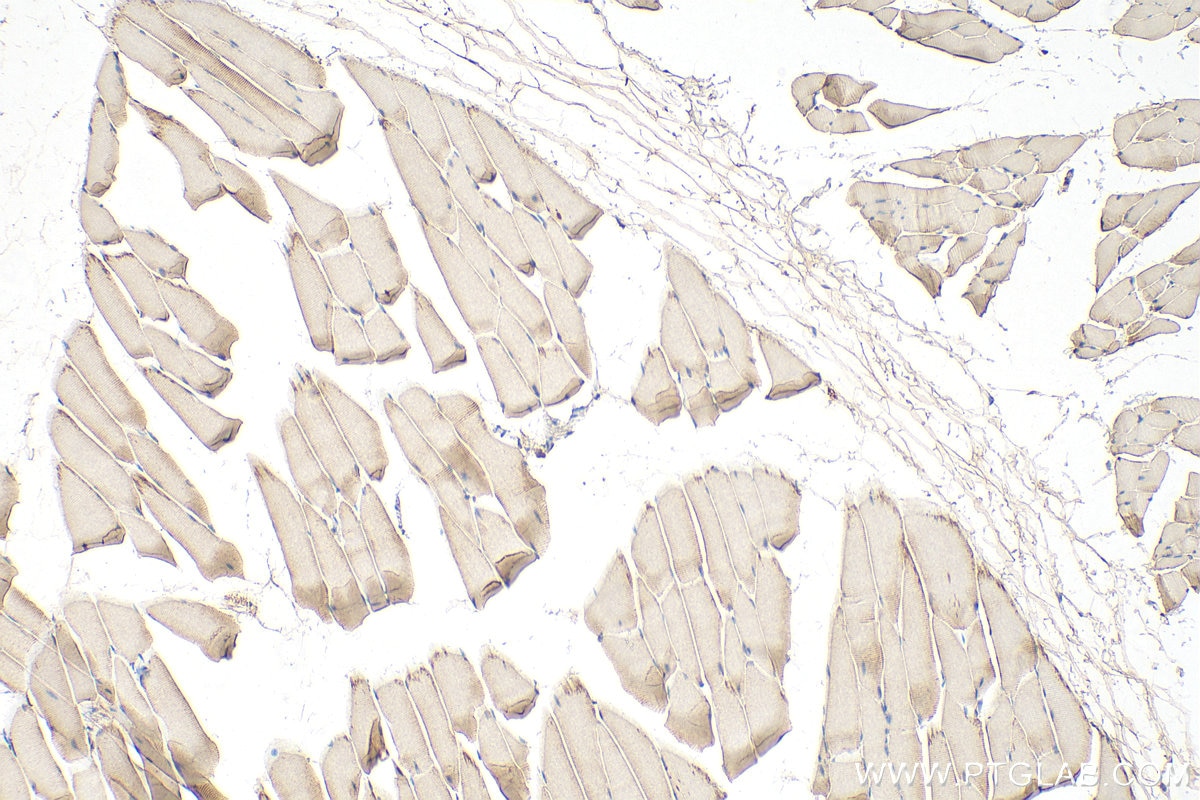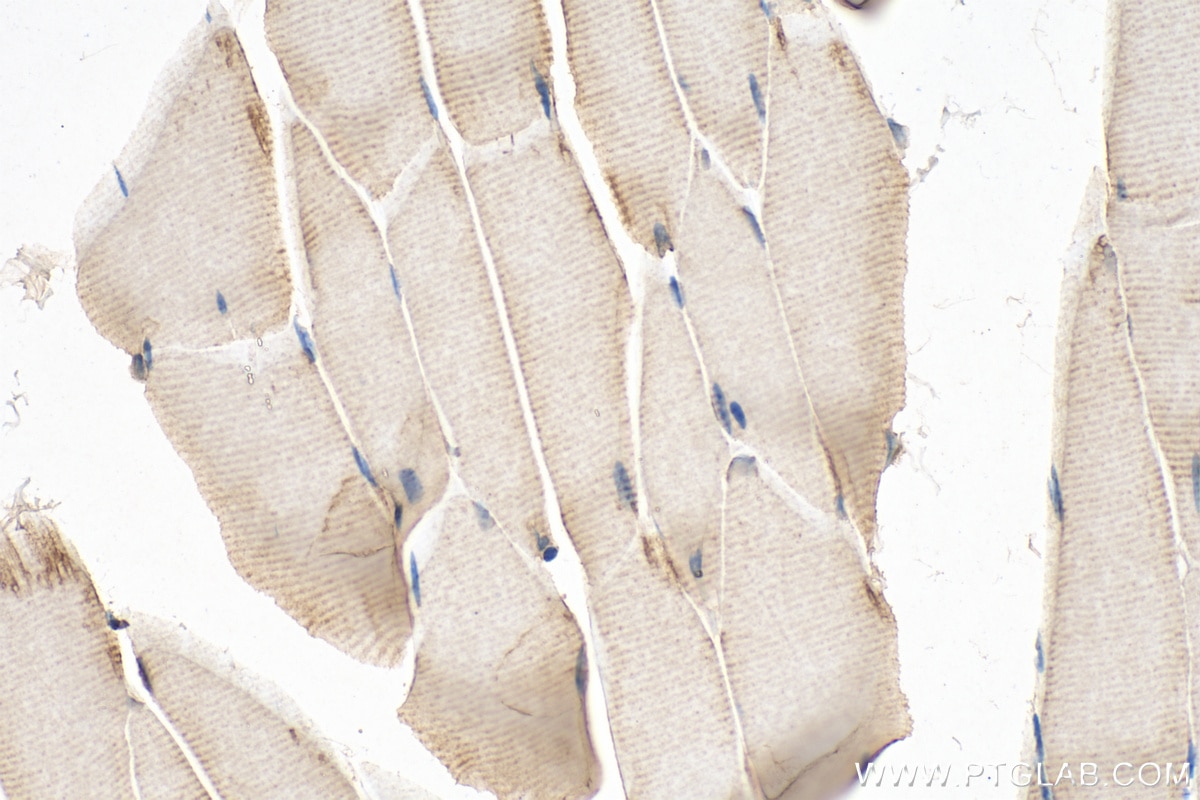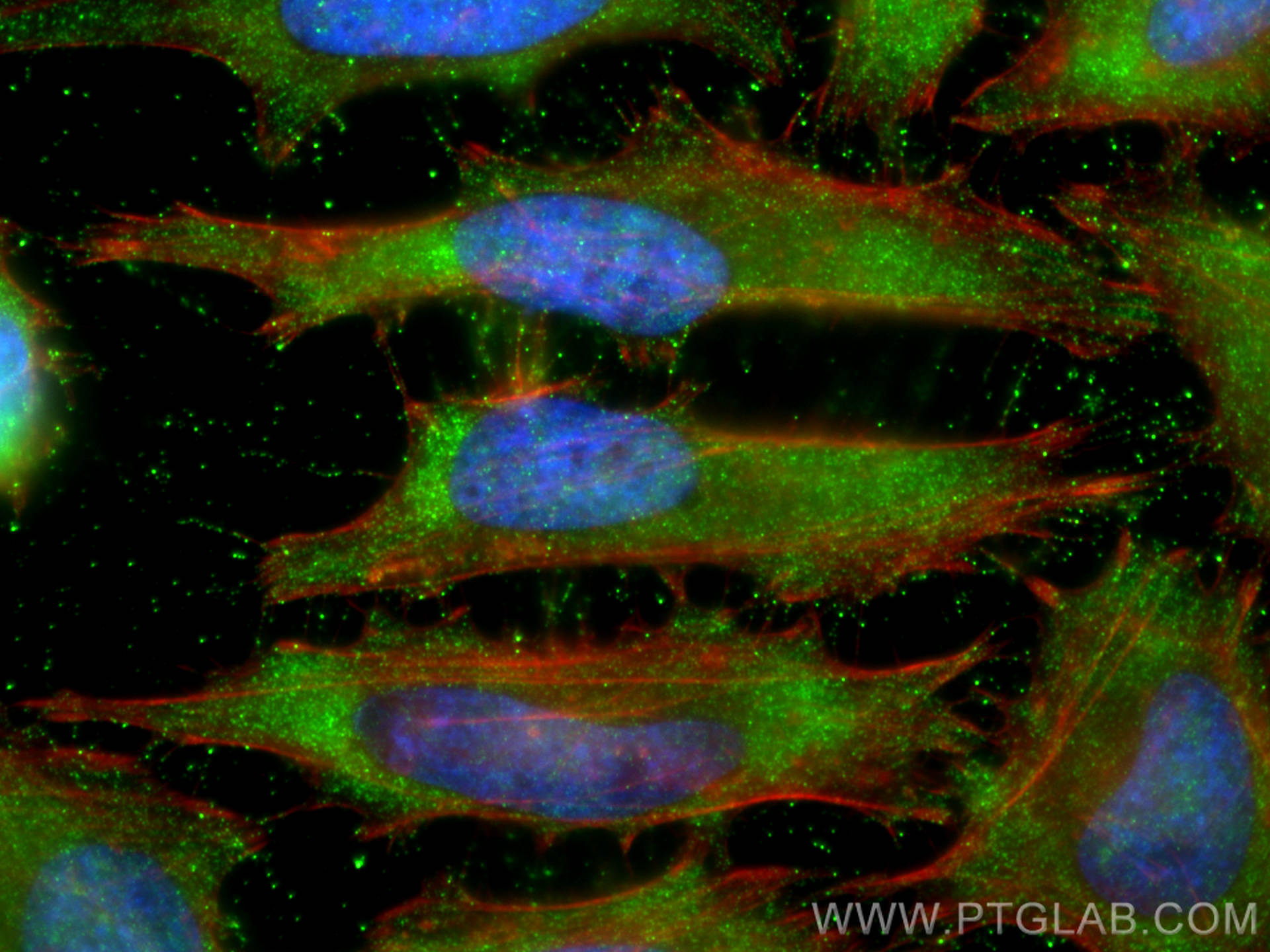- Featured Product
- KD/KO Validated
CFLAR/FLIP Polyklonaler Antikörper
CFLAR/FLIP Polyklonal Antikörper für WB, IHC, IF/ICC, IP, ELISA
Wirt / Isotyp
Kaninchen / IgG
Getestete Reaktivität
human, Maus und mehr (1)
Anwendung
WB, IHC, IF/ICC, IP, ELISA
Konjugation
Unkonjugiert
Kat-Nr. : 10394-1-AP
Synonyme
Galerie der Validierungsdaten
Geprüfte Anwendungen
| Erfolgreiche Detektion in WB | Jurkat-Zellen, HeLa-Zellen, HepG2-Zellen |
| Erfolgreiche IP | Jurkat-Zellen |
| Erfolgreiche Detektion in IHC | Maus-Skelettmuskelgewebe, humanes Skelettmuskelgewebe Hinweis: Antigendemaskierung mit TE-Puffer pH 9,0 empfohlen. (*) Wahlweise kann die Antigendemaskierung auch mit Citratpuffer pH 6,0 erfolgen. |
| Erfolgreiche Detektion in IF/ICC | HeLa-Zellen |
Empfohlene Verdünnung
| Anwendung | Verdünnung |
|---|---|
| Western Blot (WB) | WB : 1:500-1:2000 |
| Immunpräzipitation (IP) | IP : 0.5-4.0 ug for 1.0-3.0 mg of total protein lysate |
| Immunhistochemie (IHC) | IHC : 1:50-1:500 |
| Immunfluoreszenz (IF)/ICC | IF/ICC : 1:200-1:800 |
| It is recommended that this reagent should be titrated in each testing system to obtain optimal results. | |
| Sample-dependent, check data in validation data gallery | |
Veröffentlichte Anwendungen
| KD/KO | See 1 publications below |
| WB | See 9 publications below |
| IHC | See 1 publications below |
Produktinformation
10394-1-AP bindet in WB, IHC, IF/ICC, IP, ELISA CFLAR/FLIP und zeigt Reaktivität mit human, Maus
| Getestete Reaktivität | human, Maus |
| In Publikationen genannte Reaktivität | human, Ratte |
| Wirt / Isotyp | Kaninchen / IgG |
| Klonalität | Polyklonal |
| Typ | Antikörper |
| Immunogen | CFLAR/FLIP fusion protein Ag0593 |
| Vollständiger Name | CASP8 and FADD-like apoptosis regulator |
| Berechnetes Molekulargewicht | 52 kDa |
| Beobachtetes Molekulargewicht | 20-35 kDa, 50-55 kDa |
| GenBank-Zugangsnummer | BC001602 |
| Gene symbol | FLIP |
| Gene ID (NCBI) | 8837 |
| Konjugation | Unkonjugiert |
| Form | Liquid |
| Reinigungsmethode | Antigen-Affinitätsreinigung |
| Lagerungspuffer | PBS mit 0.02% Natriumazid und 50% Glycerin pH 7.3. |
| Lagerungsbedingungen | Bei -20°C lagern. Nach dem Versand ein Jahr lang stabil Aliquotieren ist bei -20oC Lagerung nicht notwendig. 20ul Größen enthalten 0,1% BSA. |
Hintergrundinformationen
CFLAR, also named CASH, CASP8AP1, CLARP, MRIT, Casper, c-FLIP, and I-FLICE, belongs to the peptidase C14A family. It is an apoptosis regulator protein that may function as a crucial link between cell survival and cell death pathways in mammalian cells. CFLAR acts as an inhibitor of TNFRSF6-mediated apoptosis. It can be cleaved to be 2 fragments P43 and P12. P43 is likely retained in the death-inducing signaling complex (DISC) thereby blocking further recruitment and processing of caspase-8 at the complex. Full-length and shorter isoforms have been shown either to induce apoptosis or to reduce TNFRSF-triggered apoptosis. CFLAR lacks enzymatic (caspase) activity.
Protokolle
| Produktspezifische Protokolle | |
|---|---|
| WB protocol for CFLAR/FLIP antibody 10394-1-AP | Protokoll herunterladen |
| IHC protocol for CFLAR/FLIP antibody 10394-1-AP | Protokoll herunterladen |
| IF protocol for CFLAR/FLIP antibody 10394-1-AP | Protokoll herunterladen |
| IP protocol for CFLAR/FLIP antibody 10394-1-AP | Protokoll herunterladen |
| Standard-Protokolle | |
|---|---|
| Klicken Sie hier, um unsere Standardprotokolle anzuzeigen |
Publikationen
| Species | Application | Title |
|---|---|---|
Cancer Res DAB2IP is a bifunctional tumor suppressor that regulates wildtype RAS and inflammatory cascades in KRAS mutant colon cancer | ||
Cell Death Differ Coordinated repression of BIM and PUMA by Epstein-Barr virus latent genes maintains the survival of Burkitt lymphoma cells. | ||
J Cell Mol Med Exercise ameliorates insulin resistance and improves ASK1-mediated insulin signalling in obese rats. | ||
Biomed Pharmacother Regorafenib suppresses epidermal growth factor receptor signaling-modulated progression of colorectal cancer. | ||
Oncol Lett YM155 sensitizes HeLa cells to TRAIL-mediated apoptosis via cFLIP and survivin downregulation. | ||
Mol Med Rep Chidamide induces necroptosis via regulation of c‑FLIPL expression in Jurkat and HUT‑78 cells. |
